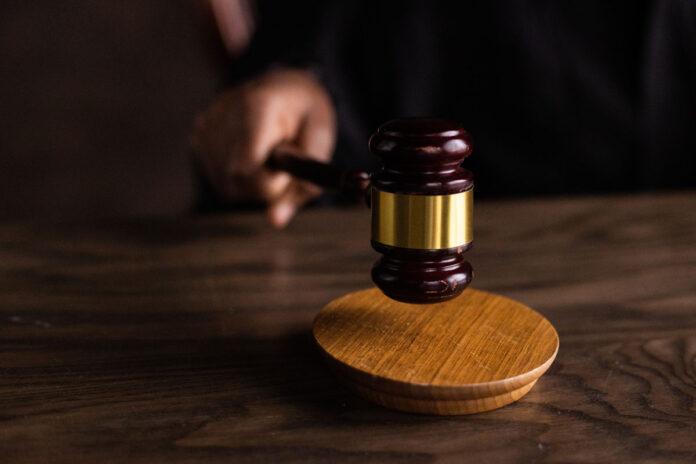
In the dynamic world of journalism, legal considerations play a pivotal role in ensuring responsible and ethical reporting. This article provides a comprehensive overview of media law, equipping journalists, media personnel, and students of journalism with the knowledge and understanding of key legal aspects that impact their work. By exploring defamation, privacy, and freedom of information, we delve into legal rights and responsibilities, significant legal cases, and strategies for avoiding legal pitfalls.
Understanding Media Law:
We begin by demystifying the intricacies of media law and its implications for journalism. By discussing the fundamental legal principles and statutes that govern the field, such as defamation laws, privacy rights, and freedom of information acts, we establish a solid foundation for understanding legal considerations in the context of journalism.
Key Legal Cases and Precedents:
We examine landmark legal cases that have shaped media law, highlighting their significance and impact on journalism. Through relevant case studies and examples, we illustrate how court decisions have influenced the boundaries of freedom of speech, the right to privacy, and the responsibilities of journalists.
Legal Rights and Responsibilities:
We provide an overview of the legal rights and responsibilities of journalists and media personnel. This includes exploring the concept of qualified privilege, the importance of accurate reporting, respecting confidentiality, and the need for responsible sourcing and fact-checking.
Strategies for Avoiding Legal Pitfalls:
To navigate the legal landscape effectively, we offer practical tips and guidelines to help journalists and media personnel avoid common legal pitfalls. These strategies include understanding the limits of freedom of speech, seeking legal advice when necessary, adhering to ethical reporting practices, and staying updated on evolving laws and regulations.
Quote: “Freedom of the press is not just important to democracy, it is democracy.” – Walter Cronkite
Questions and Answers:
1. What is defamation, and how does it impact journalists?
Answer: Defamation refers to false statements that harm a person’s reputation. Journalists must exercise caution to avoid defamation claims by ensuring the accuracy and truthfulness of their reporting.
2. What are privacy rights, and how should journalists approach them?
Answer: Privacy rights protect individuals from the invasion of their personal lives. Journalists should balance the public’s right to know with respecting privacy rights, obtaining consent when necessary, and avoiding unnecessary intrusion.
3. What is the significance of freedom of information in journalism?
Answer: Freedom of information enables journalists to access and report on public records and government activities. It promotes transparency and accountability, empowering journalists to inform the public.
4. How can journalists protect themselves from legal challenges?
Answer: Journalists can protect themselves by staying informed about media laws, seeking legal advice when needed, practicing responsible sourcing and fact-checking, and adhering to ethical reporting standards.
5. What are the ethical considerations when reporting on legal matters?
Answer: Ethical considerations include maintaining accuracy, avoiding sensationalism, respecting the presumption of innocence, and ensuring a fair and balanced representation of legal proceedings.
Role Model for Inspiration:
Amy Goodman, an award-winning investigative journalist and host of “Democracy Now!”, serves as an inspiration for journalists navigating the legal landscape. Goodman’s dedication to independent journalism, reporting on critical issues, and her advocacy for freedom of the press exemplify the importance of upholding media law.
Recommended Book: “The First Amendment Handbook” by Robert M. O’Neil. This book provides a comprehensive understanding of First Amendment rights and their application to journalism, including freedom of speech, press, and assembly.
History of Media Law: The history of media law is a complex and multifaceted journey that has evolved alongside the development of communication technologies and the growth of mass media. It encompasses legal regulations, court decisions, and societal norms that seek to balance the rights and responsibilities of media organizations, journalists, and the public. The following is an overview of key milestones in the history of media law:
1. Early Print Era:
The origins of media law can be traced back to ancient times when early civilizations began using written forms of communication. However, the concepts of freedom of expression and press freedom were not prevalent, and governments often controlled information dissemination.
2. Licensing and Censorship:
During the late medieval and early modern periods, printing presses emerged, leading to a boom in the production of books, pamphlets, and newspapers. Governments implemented licensing and censorship regimes to maintain control over information, often suppressing dissenting voices and critical publications.
3. 17th and 18th Centuries – Emergence of Press Freedom:
The Enlightenment period marked a significant shift towards advocating for freedom of the press. In England, the landmark case of John Peter Zenger in 1735 contributed to the recognition of the principle that truth should be a defense against libel charges, laying the groundwork for press freedom protections.
4. First Amendment in the United States:
The First Amendment to the United States Constitution, ratified in 1791, enshrined the rights of freedom of speech and press in the country’s legal framework, setting a powerful precedent for the protection of media rights.
5. Libel and Defamation Laws:
In the 19th century, libel laws became more refined, outlining rules for holding journalists and media organizations accountable for false and damaging statements against individuals or entities. Balancing reputation protection and freedom of the press remains a challenging aspect of media law to this day.
6. Telecommunications and Broadcasting:
With the advent of telegraphy and later radio and television, new legal challenges arose. Governments began regulating the airwaves to ensure fair allocation and to prevent interference, leading to the establishment of broadcasting regulations.
7. Privacy and Intellectual Property Rights:
As mass media continued to evolve, concerns over privacy and intellectual property rights grew. Laws protecting individuals’ private lives and creative works became more prominent in the legal landscape.
8. Internet and Digital Media:
The rise of the internet and digital media in the late 20th century presented novel legal challenges. Issues such as online defamation, copyright infringement, data privacy, and the liability of internet service providers required new legislation and judicial interpretations.
9. Protection of Journalistic Sources:
Over time, courts recognized the importance of protecting journalistic sources to ensure a free flow of information and investigative journalism. Shield laws were introduced in various jurisdictions to safeguard journalists from being compelled to reveal their sources in certain circumstances.
10. Social Media and Fake News:
The 21st century witnessed the rapid expansion of social media platforms and the spread of misinformation and fake news. Governments and tech companies grappled with devising effective mechanisms to combat harmful content without infringing on free speech.
11. Global Perspective:
Media law has evolved differently across countries and cultures. Some nations have strong protections for media freedom, while others may have restrictive laws that curtail journalists’ independence and expose them to censorship or prosecution.
Some of the key aspects of media law in India include:
1. Constitutionally Guaranteed Rights:
The Constitution of India provides for the fundamental right to freedom of speech and expression under Article 19(1)(a). This right includes the freedom of the press, ensuring that media organizations can operate independently and provide information without undue interference from the government.
2. Defamation Laws:
Defamation laws in India protect individuals and entities from false and damaging statements made in print, broadcast, or digital media. Journalists and media organizations must exercise caution to avoid publishing defamatory content that can lead to legal repercussions.
3. Contempt of Court:
Contempt of court laws in India aim to safeguard the authority and dignity of the judiciary. Media outlets are expected to report on court proceedings responsibly and avoid any content that may be considered contemptuous.
4. Press Council of India:
The Press Council of India is an autonomous body established under the Press Council Act to promote and maintain the standards of newspapers and news agencies in India. It acts as a watchdog and deals with complaints against the media related to ethics and professional misconduct.
5. Broadcasting Regulations:
The Ministry of Information and Broadcasting in India regulates the broadcasting sector, including television and radio. Broadcasters must adhere to content and advertising standards, and licenses are required for operating television and radio channels.
6. Digital Media and OTT Platforms:
With the rise of digital media and over-the-top (OTT) platforms, India has been grappling with regulatory challenges in this sector. In 2021, the government introduced guidelines for digital news media and OTT platforms to address issues like self-regulation, content monitoring, and complaint redressal.
7. Internet Intermediary Liability:
Under the Information Technology Act, 2000, internet intermediaries, including social media platforms and search engines, enjoy certain safe harbor protections as long as they comply with the prescribed rules and regulations.
8. Right to Information (RTI) Act:
The RTI Act empowers citizens to access information from public authorities, including government bodies. Journalists often use this law to obtain government records and other relevant information for their reporting.
It is essential to note that India’s media law landscape is continuously evolving, and new regulations and court decisions may impact how media operates within the country. The legal framework strives to uphold the principles of a free press while addressing various challenges and concerns in the rapidly changing media environment.
Media law is an essential aspect of journalism that journalists, media personnel, and students of journalism must navigate. This comprehensive article has provided an overview of media law, covering defamation, privacy, and freedom of information. By incorporating case studies, practical tips, and guidelines, we aim to equip readers with the knowledge and skills to understand legal considerations, avoid legal pitfalls, and responsibly exercise their rights and responsibilities. With a relevant quote, answering key questions, introducing an inspiring role model, recommending a notable book, and exploring the history of media law, this article serves as an informative resource for journalists seeking to navigate the legal landscape with confidence and integrity.









